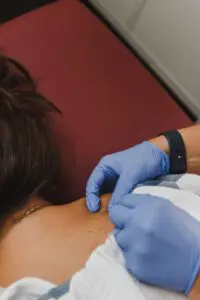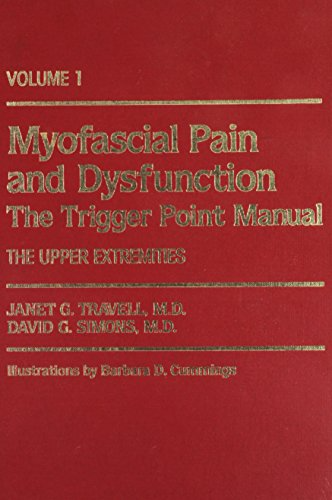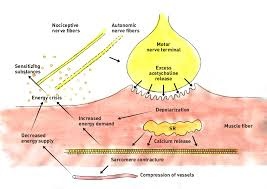What is Trigger Point Dry Needling?
Trigger Point Dry Needling is a technique used by physical therapists and some others to treat myofascial pain. Interestingly, we are also seeing more and more acupuncturist performing dry needling as well. A needle is inserted into a muscle to elicit a twitch response and ultimately reduce pain and/or improve function.
You may be asking “isn’t it the same as acupuncture?”
There really is no short answer to this question but, generally speaking, they are not the same.
Acupuncture
Acupuncture is based on Traditional Chinese Medicine. The belief is that the systems of our body are fed by energy channels. These channels have “grand central stations” of flow or “qi” (pronounced “chi”). By inserting a needle into those stations, we increase the amount of energy to a given system (e.g. the low back).
There are many different types of acupuncture including a more modern technique that involves needling into motor points with the intention of relieving dysfunction.
[Motor points are superficial areas overlaying skin where the nerve enters muscle and when stimulated with an electrical pulse, a visible twitch is evoked. In comparison, a trigger point is a taut bands of muscle fibers located in a muscle that will elicit a twitch response upon palpation. There is less than 30% overlap of motor points and trigger points.]

Trigger Point Dry Needling
History
Trigger Point Dry Needling emerged in the United States as a practice for physical therapists in the early 1980s as a result of studies performed by Dr. Janet Travell, a cardiologist at Beth Israel Hospital in New York. Interestingly, sh’s best known as the first female physician to a President (President John F. Kennedy, 1960).
Dr. Travell observed a trend in patients presenting with cardiac symptoms who did not have findings consistent with cardiac disease. In those people, she consistently found a trigger point (or taut band of muscle fibers) between the 5th and 6th rib on the right side of the body of these patients that reproduced their cardiac symptoms. Ah ha!
Referred Pain
Already a believer in referred pain, Dr. Travell partnered with aerospace physician Dr. David Simmons, who studied the physiologic response of stress to weightlessness. Together, they published Myofascial Pain and Dysfunction, The Trigger Point Manual which is the primary teaching tool for medical professionals on the diagnosis and treatment of myofascial pain.

Treatment of Trigger Points
Analgesic Usage
Knowing that trigger points caused pain, Dr. Travell convinced some unbelieving physician friends to begin treating trigger points with pain medication. Initially the treatment of choice was procaine, an injectable analgesic. Over time less invasive options like topical sprays were used but both provided only temporary relief of symptoms.
Anti-Inflammatories
Later studies found trigger points to contain chemicals that blocked the ability for a nerve to talk to a muscle. Those inflammatory chemicals contribute to ongoing dysfunction of the muscular fiber and ultimately pain. This finding led investigators to use steroids (anti-inflammatories) as a treatment option instead of pain medication.
To determine which treatment option is better, comparison studies looked at long term outcomes of analgesic (pain medication) and steroids (anti-inflammatories) utilizing a control group (saline solution).
Upon follow up at six and twelve months the subjects who were injected with saline had the better outcomes.
Why did the control group have better outcomes?
The answer is easy: the needle.
Jan Dommerholt, founder of Myopain Seminars and understudy of Dr. Travell wrote a great article summarizing the clinical evidence for Trigger Point Dry Needling that can be found here.

Mechanical Pressure
We know that muscles respond to mechanical pressure. This is why massage therapy is used for relief of muscular pain. It’s the same reason why physical therapists dig their elbows into your buttocks and why lacrosse balls and foam rollers fly off the shelves at local stores. Deep pressure, vibration, and light touch are all forms of mechanical pressure. So is a needle. The needle gets to a depth in tissue that superficial techniques can not.
Noxious Stimulus
The needle is also considered a noxious (or “obnoxious”) stimulus and causes a local twitch response (for unknown reason as of today). As a result of the twitch, we see a “dump” of the inflammatory agents mentioned above. Those toxins impede the brains ability to correct the contracture in the first place.
It’s important to note that trigger point injections require the use of hypodermic needles that have teeth (to prevent needle from popping out of skin). When removed, they cause tissue shearing leading to skin breakdown. Trigger point dry needling uses thin, mono-filiform needles in which the point of the needle is smaller than a skin pore and do not cause any tissue damage.
How then is Trigger Point Dry Needling really any different from Acupuncture?
A practitioner* completes a thorough examination and determines if the origin of symptoms arises, in whole or in part, from the presence of myofascial trigger points. If so, a dry needle is inserted into the trigger point in lieu of pain relief medication.
* Ask your practitioner about their training to ensure they are well-trained (preferably one who has been through comprehensive education and testing)
The most appropriate points to treat are determined by knowledge gained through research, training and clinical experience. It is the job of the practitioner to determine whether Trigger Point Dry Needling is the best option as it is not appropriate for every person.
Indeed, there are other ways to treat trigger points. Dry Needling is a tool in the toolbox, but it’s just that.
In comparison, Acupuncturist also perform thorough examinations and upon completion determine a source of resistance for energy. Utilizing pre-determined points along channels, they insert needles into those points thus spurring more energy and facilitating less turbulence. Systems are thought to function at their greatest when energy flows smoothly and with good volume.
The over-arching difference is the theory behind the techniques. Dry needling is a more active technique, using one needle at a time with real time change whereas acupuncture is a more passive technique that has a more latent affect.
Education Requirements
Unfortunately, Acupuncture boards feel that Physical Therapists are infringing on their practice by performing techniques that are outside their scope of practice. They often comment on lack of training of physical therapists around invasive use of a needle.
That said, Acupuncturist training varies by school but typically includes 3-4 years of study including internship.
On the other hand, Physical Therapy education includes 4 years of undergraduate study with a focus in applied sciences. Graduate school is 3 years additional years including internships culminating in a clinical doctorate.
Furthermore, post-graduate education/training to perform the technique is necessary. The amount of training required to perform Trigger Point Dry Needling varies widely by state which, in my opinion, contributes to the negative perception of the practice due to the wide variation of the skills of practitioners.
Venn-Diagragm of Medical Practitioners
As an aside and knowing the confrontational nature of this technique, I think it’s important to talk about the overlap in medicine. Physical therapist are considered the musculoskeletal specialist of the medical community.
Physicians, athletic trainers and physical therapist all perform similar testing to diagnose musculoskeletal conditions. Physical therapists and massage therapists both treat muscle. Chiropractors and physical therapist both treat joints. Physical therapists, athletic trainers, chiropractors and personal trainers all use exercise to rehab.
When a person is deciding who to see for a given condition it’s in their best interest to evaluate the skill level of any prospective healthcare provider. You should feel empower to consider and question a providers diagnostic skills, interventional skills, and ultimately the knowledge required to prevent future injury/re-injury.

Dr. Sarah Cash Crawford, PT, DPT, COMT, CMTPT, is a physical therapist and certified myofasical trigger point therapist through Myopain Seminars ®, the only certifying body of Trigger Point Dry Needling in the US. Dr. Crawford trained under Jan Dommerholt, PT and founder of Myopain Seminars ®, who worked directly under Drs. Travell and Simmons in his pursuit to bring dry needling to the U.S. Dr. Crawford has been performing Trigger Point Dry Needling the Cincinnati area for over six years and was the first CMTPT in the state of Ohio.
As a licensed Physical Therapist for nearly 10 years, she has a background in neurologic rehabilitation, manual therapy and a specialty in treating chronic pain. Dr. Crawford is the founder of Anchor Wellness, Inc. and the Anchor Wellness Center, an integrative health practice that specializes in physical therapy, pilates and health coaching.


